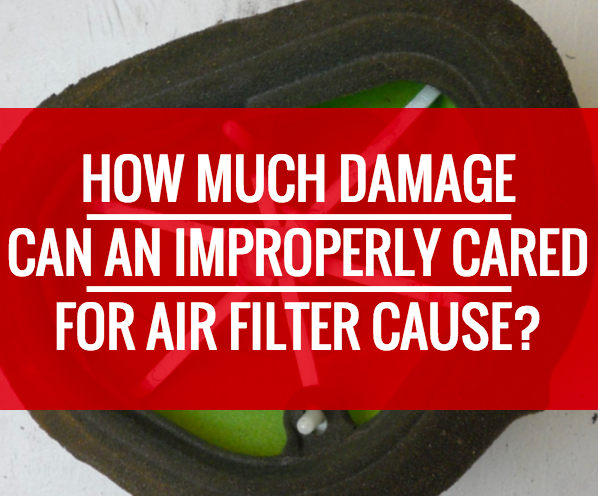How Much Damage Can An Improperly Cared For Air Filter Cause?
I thought this week it would be a good idea to share with you an example of what can happen when dirt gets passed an engine's air filter. This will be a short post, but a picture is worth a thousand words. In my next post I’ll go into detail on how to properly care for your air filter to help ensure that this never happens to you.
The series of photos below shows a sad case where dirt has found its way into the engine and wreaked havoc. The photos are all from the KX250F I bought on the cheap with the sole intention of rebuilding the engine and documenting the process for my book, The Four Stroke Dirt Bike Engine Building Handbook. Honestly, I couldn’t have bought a better bike for the project, nearly everything on the bike was worn out or screwed up from the previous owner.
Here is how the air filter and airbox looked prior to disassembly.
Here is the back side of the air filter. The filter was completely dry. There was no grease on the sealing face of the filter or the airbox flange. In this particular case, dirt could have got into the engine through the filter or between the filter and sealing flange. The amount of dried mud in the airbox and on the bike also makes me suspicious that muddy water got into the engine instead of just dirt. I honestly can’t say for certain.

The airbox itself was also extremely dirty.

Once the engine was disassembled I carefully examined the piston assembly and cylinder bore. At first, I could not get any of the rings to move freely. Only after I had pounded a pick between the ring ends of the compression ring was I able to get the compression ring off. As I removed the compression ring, a load of sand came with it.
This photo of the compression ring doesn’t do the situation justice. Some of the dirt was actually removed from the ring as I handled it.
Here is a close up of the compression ring. Note all the grit!


The oil rings didn’t fair any better, were just as stuck, and had a lot of dirt on them.


Here you can see dirt inside the ring grooves and at the edges.


Here is dirt I rubbed off the oil rings.

Miraculously (and fortunately for me) whether the engine sucked in dirty air or water, it happened quickly and stuck the rings to the piston so they could no longer seal correctly, and the engine subsequently lost compression and power in a hurry. This speculation is based on the fact that the cylinder bore showed no signs of excessive wear or damage and it measured well within the service limits. This is an outcome I never though possible and is hard to believe.
I hope you enjoyed this brief write up on the damage that can result from ingesting dirt, whether from abnormal circumstances such as dropping a running engine into a mud hole or simply neglecting to take care of the air filter when running the engine in dusty conditions. In my next post I’ll show you how to care for and install your filters so these problems don’t happen to you! Questions or comments are always welcome and I enjoy hearing from you all!
-Paul
https://www.diymotofix.com/
If you like my blog, click the "Follow this blog" button in the upper right. You must be registered to do this.
-
 11
11
















19 Comments
Recommended Comments